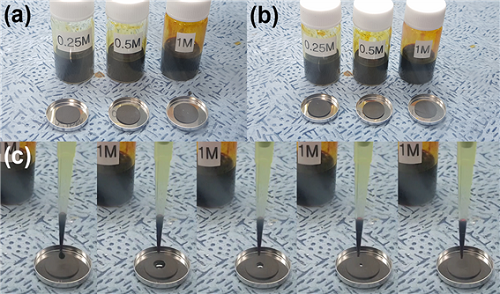By Jean-Jacques DeLisle, contributing writer
Battery technology is a fast-growing and ever-changing field, and new advancements are produced every day. Until recently, lithium-ion batteries have had a monopoly on the rechargeable battery market, but their time may be near an end now that new lithium-sulfur (Li-S) batteries are becoming more viable. Thanks to some interesting new advancements in energy storage, the sulfur-based batteries are quickly matching and, in some ways, exceeding their lithium-ion counterparts. Let us dive into the mechanics of how these new batteries work.
In the lab of Professor Do Kyung Kim, who comes from the KAIST Department of Materials Science, a new type of battery has been engineered. Enter the new high-areal-capacity lithium-sulfur batteries, which are at the cutting edge of design for energy storage. Li-S batteries function by taking advantage of capillary forces and by entangling polysulfide molecules with carbon nanofibers.
As technology advances, the need to store massive amounts of energy in a portable and convenient way is becoming more and more critical. Sulfur-based batteries could be a solution to this problem, but traditional Li-S batteries still have a few quirks that need to be worked out. Scientists have had to overcome many hurdles to bring Li-S batteries to the market, including the low electrical conductivity of sulfur, volumetric expansion and contraction of the battery while charging or discharging, and permanent damage of the electrode caused by the dissolution of the lithium-polysulfide into the electrolyte, a problem known as the “shuttle effect.”

Image source: KAIST.
To overcome the obstacles facing Li-S batteries, researchers and scientists have had some success trying several different methods. One method was to coat the sulfur with metal oxides, or carbonaceous matrices that make use of zero-dimensional (0D) carbon materials. The use of these materials resulted in an increase in conductivity and a reduction of some of the thermal expansion that came from charging. Do Kyung Kim’s team built upon this innovation and began using one-dimensional (1D) carbon materials. 1D carbon materials have an advantage over 0D matrixes because their larger surface area allows them to conduct more electrons and provide more current at a lower contact point resistance.
This development was made by exploiting the natural force of capillary action. In order to develop these new batteries, researchers had to overcome the high energy associated with the dissolution of polysulfides. To do this, they used carbon nanofibers that, when soaked in polysulfides, use capillary action to suppress the dissolution of the sulfides and provide a high level of electrical conductivity. This winning combination allows the sulfur contained per unit area (mg/cm2 ) to be five times greater than the previous battery models that have been produced.
These new lithium-sulfur batteries contain an areal capacity of 7 mAh/cm2 , which amounts to up to seven times that of a conventional lithium-ion battery. This means that very soon, we can expect to see lithium-ion batteries falling to the wayside and sulfur-based, carbon-fiber mesh batteries taking over. “This study brought us closer to commercial-grade high-capacity Li-S batteries, which are applicable for a wide variety of products, including electric vehicles, unmanned aerial vehicles (UAVs), and drones,” said Professor Kim.
Many industries will be affected by the rise of lithium-sulfur batteries from electric cars and solar energy storage to smartphones and computers. With such an increase in capacity from lithium-ion batteries, there’s no reason why we shouldn’t see sulfur make its way into consumer and industrial applications. According to a senior market analyst at Technavio, a company that specializes in market trends and analysis, the global lithium-sulfur battery market will grow at a compound annual growth rate (CAGR) over 71% in the next 10 years or so. This rampant growth is not only fueled by the batteries’ desirable features but also stringent laws against lead pollution, which have led fabricators to look for more environmentally friendly ways to produce batteries.
Older, less efficient lead-acid batteries produce a large amount of waste both in production and when disposed. Though recycling can mitigate some of this waste, the older batteries contain large amounts of sulfuric acid, which absorbs some of the lead during discharge and cannot be easily disposed of or recycled. By using sulfur instead of lead, Li-S batteries do not require the use of sulfuric acid or other more harmful chemicals, which allows them to be disposed of easily or recycled. The production of Li-S batteries is much cleaner and less wasteful than previous battery types, which explains its allure to manufacturers as more and more businesses attempt to become more environmentally conscious.
Though sulfur batteries will no doubt find many applications in the future, the largest market for them is clearly aviation, where drones and electric aircraft are being produced faster than ever, driving up the demand for powerful batteries. The automotive industry is also a key player, and with more and more electric vehicles on the road every day, the automotive industry should account for 5% of the total market by 2022, according to the Technavio report.
Li-S batteries are set to revolutionize the world of energy storage in the coming years. With the new battery’s massive increase in storage capacity, we can expect to see electric cars and drones that can travel at ever-increasing distances on a single charge. Handheld technology such as smartphones and other gadgets will also receive a substantial boost in battery life, and with sulfur being a relatively inexpensive material, production costs should go down. Solar energy production is growing each year, and with it is the demand for long-lasting batteries with large storage capacities, another niche that Li-S batteries could easily fill.
Advertisement
Learn more about Electronic Products Magazine








